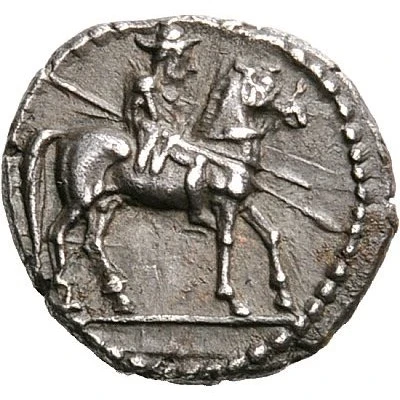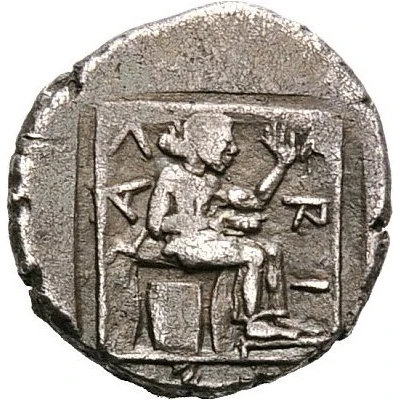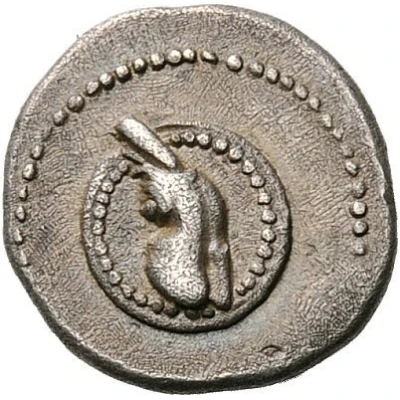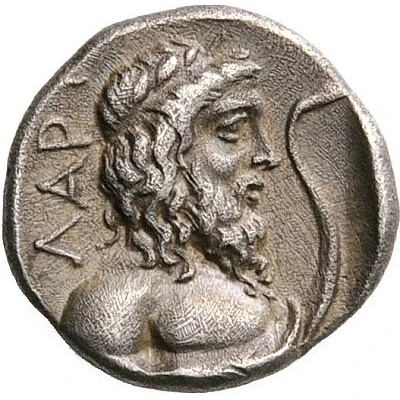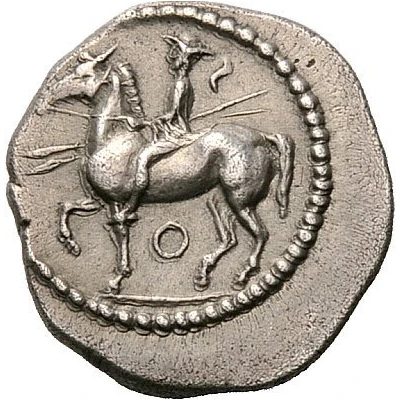
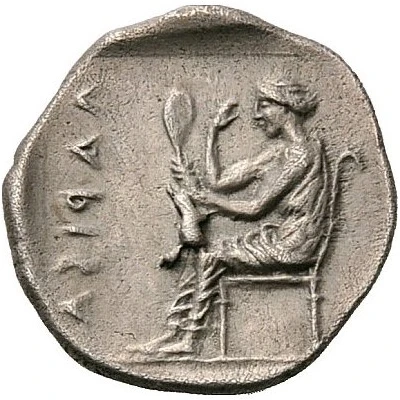

© Nomos AG
Trihemiobol 460 BC - 440 BC
| Silver | 1.50 g | - |
| Issuer | Larissa (Thessaly) |
|---|---|
| Type | Standard circulation coin |
| Years | 460 BC - 440 BC |
| Value | Trihemiobol (¼) |
| Currency | Drachm |
| Composition | Silver |
| Weight | 1.50 g |
| Shape | Round (irregular) |
| Technique | Hammered |
| Demonetized | Yes |
| Updated | 2024-10-10 |
| Numista | N#170976 |
|---|---|
| Rarity index | 97% |
Reverse
The nymph Larissa seated left, on a chair with a curve-topped back, holding mirror in her left hand and raising her right hand towards her face
Script: Greek
Lettering: ΛΑRΙϞ Α
Comment
Herrmann III D/E, pl. II, 13; Traité IV, 676, pl. CCXCVII, 9 (but with Ϟ in the legend, not Σ).
Interesting fact
The Trihemiobol coin from Larissa (Thessaly) was used as a form of currency in ancient Greece during the 5th century BC. Its name "Trihemiobol" comes from the Greek words "tri", meaning three, and "hēmi-", meaning half, referring to the coin's value being equal to half of a drachma, the standard unit of currency at the time. Despite being made of silver, the Trihemiobol was not a high-denomination coin, but it was still widely used in everyday transactions.
